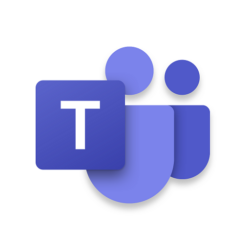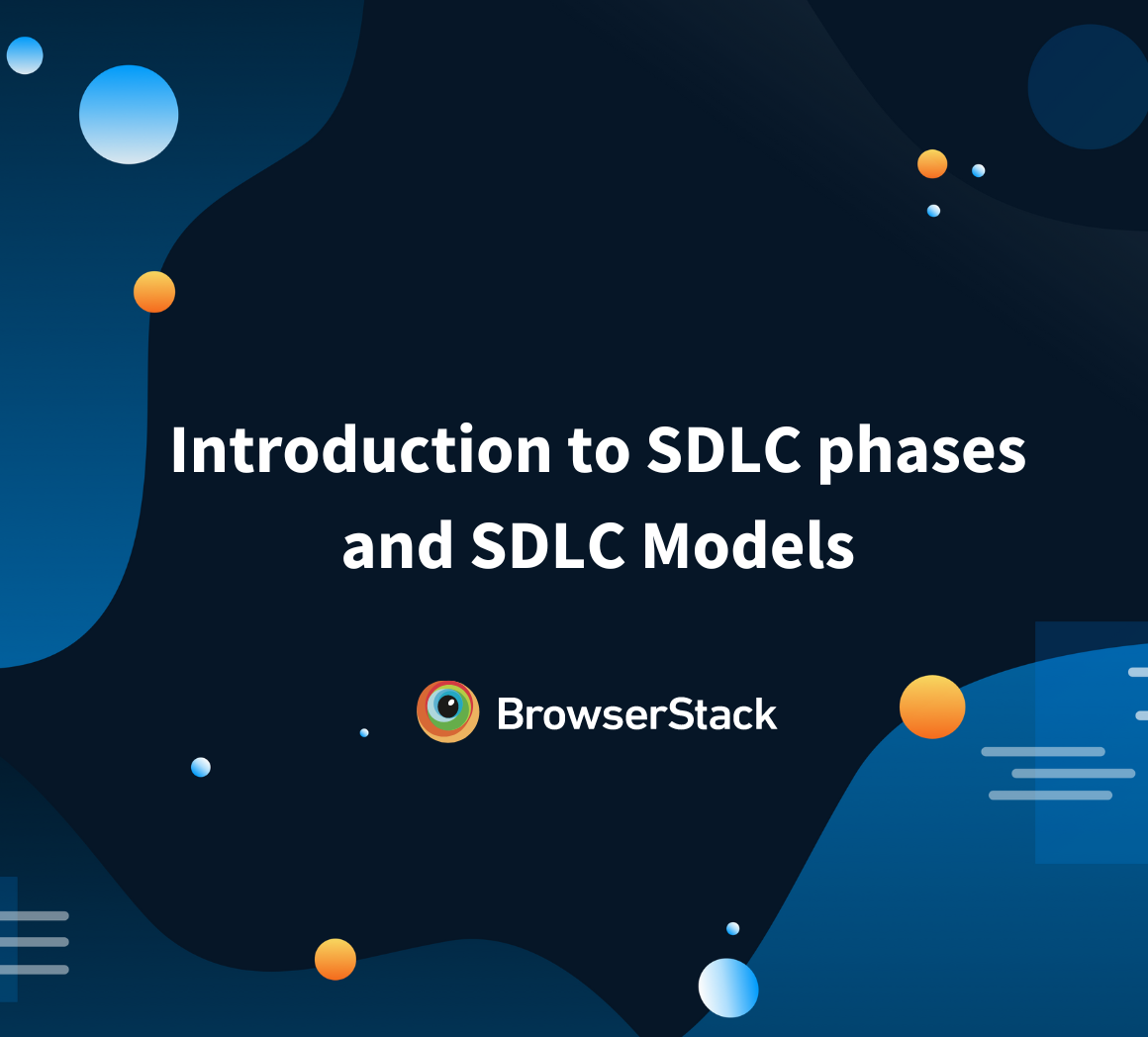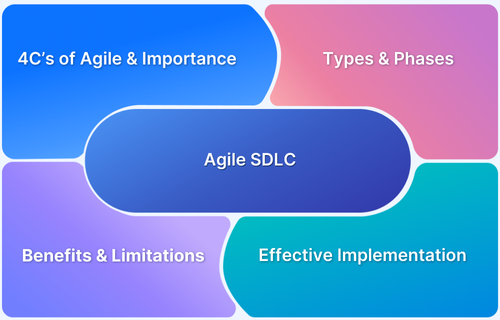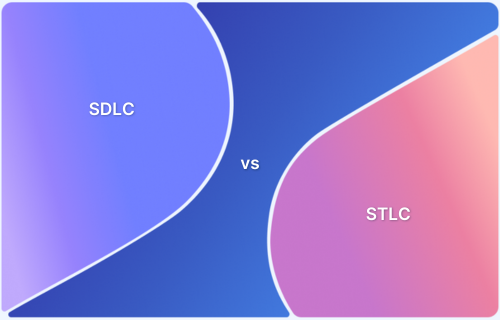Top 15 SDLC tools
By Sandra Felice, Community Contributor - January 2, 2025
Software Development Life Cycle (SDLC) tools are the backbone of creating high-quality software. They help teams stay organized, efficient, and on track from start to finish.
Whether you’re a developer fine-tuning code, a project manager tracking progress, or a QA tester hunting for bugs, SDLC tools simplify the entire process with top-notch results.
This article explains SDLC Tools, their significance and explores its types.
- What are SDLC Tools?
- Why are SDLC Tools used?
- Types of SDLC Tools
- Top 15 SDLC Tools
- 1. BrowserStack
- 2. Jira
- 3. Tuleap
- 4. GitHub
- 5. StarTeam
- 6. Jenkins
- 7. GitLab CI/CD
- 8. ClickUp
- 9. Enterprise Architect
- 10. Modelio
- 11. Slack
- 12. Microsoft Teams
- 13. SonarQube
- 14. Embold
- 15. Figma
What are SDLC Tools?
SDLC tools are software solutions designed to assist teams in following the stages of the Software Development Life Cycle, such as:
- Requirement gathering
- Designing
- Coding
- Testing
- Deployment
- Maintenance
These tools provide structure & consistency ensuring every phase is executed smoothly. They not only save time and reduce errors but also empower teams to turn complex ideas into reliable, user-friendly software. Think of them as a bridge between creativity and functionality ensuring no detail is overlooked.
Read More: Introduction to SDLC Phases and SDLC Models
Why are SDLC Tools used?
SDLC tools are essential for delivering high-quality software efficiently. They streamline workflows, enhance collaboration, and ensure consistency throughout the development lifecycle. Here’s why they matter:
- Streamlined Processes: These tools provide structure and automate repetitive tasks, helping teams focus on critical development activities.
- Improved Collaboration: By centralizing communication and updates, SDLC tools enable seamless teamwork across locations.
- Enhanced Quality: Integrated testing identifies bugs early, reducing the cost and effort of fixing issues.
- Consistency and Compliance: They enforce coding standards and support regulatory compliance.
- Higher Productivity: Automation and CI/CD pipelines save time and boost efficiency.
- Risk Management: Detailed insights help teams address risks proactively.
- Scalability: SDLC tools adapt to the growing complexity of projects, keeping processes organized.
Types of SDLC Tools
SDLC tools are designed to support different stages of the Software Development Life Cycle, making the development process more efficient and structured. Here are the main types:
1. Project Management Tools
These tools assist in planning, organizing, and tracking tasks and milestones. They help teams collaborate effectively and ensure the timely delivery of projects.
Examples: Jira, Trello, Monday.com.
2. Version Control Tools
Essential for managing source code changes, these tools track revisions, support branching and merging, and enable collaboration among developers.
Examples: Git, Subversion, etc.
3. Requirement Management Tools
These tools help capture, organize, and manage project requirements, ensuring that all stakeholders are aligned.
Examples: Jama Connect, ReQtest, IBM DOORS.
4. Design and Modeling Tools
These tools provide a visual representation of the project, and they are used to create system designs, architecture diagrams, and workflows.
Examples: Lucidchart, Enterprise Architect, Microsoft Visio.
5. Testing Tools
Testing tools automate and manage various types of testing, such as unit, integration, and performance testing, to ensure software quality.
Examples: BrowserStack, Selenium, etc.
6. Build and Deployment Tools
These tools automate the process of building and deploying software, ensuring consistency and reducing manual effort.
Examples: Jenkins, GitLab CI/CD, Bamboo.
7. Monitoring and Maintenance Tools
Post-deployment, these tools help track application performance, monitor servers, and manage system health.
Examples: Nagios, New Relic, Splunk.
Each of these tools addresses a specific phase or need within the SDLC, enabling teams to work more efficiently and effectively.
Top 15 SDLC Tools
1. BrowserStack
BrowserStack is a top-tier SDLC tool designed to enhance the testing phase of software development of mobile and web apps. They also provide teams with real devices & browsers on the cloud, eliminating the need for physical infrastructure.
Powerful automation and debugging capabilities ensure that applications are tested efficiently. This makes it an essential tool for delivering high-quality software at speed.
Key Features
- Real Device and Browser Testing: Test apps on 3,500+ real devices and browsers to ensure cross-platform compatibility during the testing phase.
- Automation Support: Accelerates functional testing with tools like Selenium, Appium, and Cypress, directly supporting the SDLC’s automation testing needs.
- Visual Testing with Percy: Detects UI changes and ensures a consistent user interface across builds supporting regression testing.
- Local Testing: Enables secure testing of locally hosted apps or environments before moving to the deployment stage in the SDLC.
- Detailed Debugging: Provides comprehensive logs, screenshots & reports to aid developers during the defect resolution process.
- Test Management: Integrates with test management tools to organize and streamline the entire testing workflow, improving efficiency.
- Low-Code Automation: Offers low-code automation solutions, making it easier for teams with varying technical expertise to create and execute tests.
Verdict
BrowserStack is perfect for agile teams needing fast and accurate cross browser testing across real world environments. Its suite of testing tools for various needs can help teams with diverse scenarios from manual and automated testing of web and mobile apps.
2. Jira
Jira is an agile project management tool that is used by teams to plan, track & manage software development projects. It offers customizable workflows & real time collaboration features to enhance team efficiency.
Jira also supports a wide range of integrations, helping teams streamline their processes across different stages of the SDLC. Whether used for bug tracking or sprint management, it’s a key tool for development and QA teams.
Key Features
- Agile Project Management: Scrum and Kanban boards for task tracking and sprint planning.
- Customizable Workflows: Adapt workflows to match your team’s specific development processes.
- Real-Time Collaboration: Easily collaborate with team members via comments, @mentions, and attachments.
- Issue and Bug Tracking: Comprehensive issue tracking from creation to resolution with detailed reports.
- DevOps Integration: Connects seamlessly with GitHub, Jenkins, and other DevOps tools for continuous integration.
Verdict
Jira excels at agile project management & issue tracking that makes it ideal for software development teams. However its complexity may overwhelm smaller teams or beginners.
Read More: Best Test Management Tools for Jira
3. Tuleap
Tuleap is an open-source SDLC tool that integrates project management, issue tracking, and continuous integration in one platform. It provides support for agile methodologies, including Scrum and Kanban, to manage software development tasks. Tuleap allows teams to customize workflows and track progress from planning to deployment. It’s designed to support both small teams and large organizations with robust DevOps capabilities.
Key Features
- Agile Project Management: Offers Scrum and Kanban boards for effective sprint management and task tracking.
- Version Control Integration: Supports Git & SVN for seamless version control integration.
- CI/CD Pipeline Integration: Automates testing, building & deployment via Jenkins integration.
- Test Management: Manage test cases and track testing results efficiently.
- Customizable Dashboards: Provides dynamic dashboards for tracking project and team performance.
Verdict
Tuleap is a powerful open-source solution that supports agile project management and DevOps integration. However, additional technical expertise may be required for initial setup and configuration.
4. GitHub
GitHub is the leading platform for version control & source code management, which offers a collaborative environment for developers. It supports Git repositories by enabling teams to track code changes efficiently and collaborate on software development projects. GitHub integrates with various SDLC tool, making it an essential component of the DevOps toolchain. It also supports project management features, enhancing team collaboration & workflow efficiency.
Key Features
- Version Control with Git: Track code changes and manage repositories with Git’s version control system.
- Pull Requests: Simplify code reviews and team collaboration through pull requests.
- CI/CD Integration: Use GitHub Actions to automate building, testing, and deploying applications.
- Bug Tracking and Project Management: Organize and manage tasks, bugs, and features through customizable issue boards.
- Open Source Collaboration: Contribute to and collaborate on open-source projects with global developers.
Verdict
GitHub is the go-to tool for version control and code collaboration. While it’s perfect for developers, larger teams may need additional tools for comprehensive project management.
Read More: Top Defect Managemnet Tools
5. StarTeam
StarTeam is a comprehensive tool that integrates version control and project management to streamline the entire SDLC. It helps teams manage code changes, track tasks & make sure smooth collaboration from development through to deployment.
With its robust features for version control, task management & reporting the StarTeam supports every stage of the SDLC ensuring consistency and efficiency. It’s a powerful solution for teams that need to manage both the technical and organizational aspects of software development.
Key Features:
- Version Control Integration: Allows teams to track code changes & maintain multiple versions by making sure smooth progress throughout the SDLC.
- Task Management and Reporting: Provides features to manage tasks, track milestones, and generate reports, improving project visibility and progress tracking.
- Centralized Code Repository: Keeps all project files & code in one secure location facilitating easy collaboration across development, testing, and deployment stages.
- Branching and Merging Support: Enables parallel development, helping teams work on different features simultaneously and merge them seamlessly.
- Cross-Platform Testing: Supports multiple operating systems ensuring teams can work across different platforms during various stages of the SDLC.
Verdict:
StarTeam enhances team collaboration and project tracking across the SDLC by improving both version control and task management. However, its interface may seem a bit dated, and new users could face a learning curve.
6. Jenkins
Jenkins is a powerful tool in the SDLC that automates the continuous integration & continuous delivery (CI/CD) processes. It ensures that code changes are automatically tested, built, and deployed, allowing teams to deliver software more efficiently and frequently.
By integrating seamlessly into SDLC, Jenkins helps streamline the development pipeline by reducing manual effort & minimizing the risk of errors. This makes it an essential tool for agile development teams aiming for faster & more reliable software delivery.
Key Features:
- Automated Builds and Tests: This feature triggers builds and tests automatically for every code change during the development stage, ensuring code quality and faster feedback.
- Extensive Plugin Support: Integrates with various SDLC tools, including version control systems and deployment tools, enhancing its role in each phase of the SDLC.
- Distributed Builds: Supports distributed architecture to speed up builds and enable scalability during the integration and delivery stages.
- Pipeline as Code: This approach defines the continuous delivery pipeline through code, ensuring smooth and consistent transitions between stages in the SDLC.
- Real-Time Monitoring: Provides live feedback during the build, test, & deployment stages helping teams monitor progress and identify issues in real-time.
Verdict:
Jenkins speeds up development by automating builds and deployments, making the SDLC faster and smoother. But, it can be tricky for beginners or smaller teams to set up at first.
Refer to the documentation on how to install and configure BrowserStack Jenkins Plugin
7. GitLab CI/CD
GitLab CI/CD automates critical SDLC processes like testing, building, & deployment by enabling smoother software delivery. It integrates version control with CI/CD pipelines for seamless collaboration & workflow management.
With customizable pipelines, teams can define stages that are specific to their development needs. Its intuitive interface & automation capabilities make it a staple in agile and DevOps practices.
Key Features:
- Integrated Automation: Combines source control & CI/CD workflows for complete SDLC automation.
- Pipeline Flexibility: Customizable pipelines for distinct SDLC phases like testing & deployment.
- Auto DevOps: Simplifies repetitive task, enhancing efficiency in development cycles.
- Real-Time Monitoring: Offers instant insights into pipeline & build status for quicker fixes.
- Scalable Runners: Adapts to project growth with efficient resource management for larger builds.
Verdict:
GitLab CI/CD enhances SDLC automation with integrated pipelines, but its advanced features may feel overwhelming for beginners.
8. ClickUp
ClickUp is a project management tool designed to simplify SDLC tasks like planning, tracking & collaboration. It provides flexible dashboards to suit any development methodology from agile to waterfall.
Real-time reporting ensures transparency in progress across all phases of the SDLC. Its versatility makes it adaptable for both small teams and large organizations handling complex projects.
Key Features:
- Custom Workflows: Easily align workflows to match SDLC stages like planning, testing or maintenance.
- Gantt Charts: Visualize timelines to manage deadlines and track project milestones.
- Collaboration Tools: Simplifies communication during requirements gathering and defect resolution.
- Integrated Reports: Provides actionable insights into progress across SDLC phases.
- Time Tracking: Optimizes resource planning by monitoring task durations.
Verdict:
ClickUp supports SDLC planning and tracking with flexible tools, but smaller teams might find its extensive features excessive.
Read More: What is Quality Assurance Testing
9. Enterprise Architect
Enterprise Architect is a modeling & design tool that supports multiple stages of the SDLC. From requirement analysis to system design it ensures that teams collaborate effectively resulting in clear & detailed project workflows.
It’s especially helpful for large scale projects requiring complex system architecture. By bridging the gap between design & implementation it keeps the entire process streamlined and efficient.
Key Features
- Requirements Management: Simplifies requirement gathering and tracking for accurate planning in SDLC.
- UML Modeling and Simulations: Helps teams design, visualize, and analyze systems during the design phase.
- Code Engineering: Supports code generation and reverse engineering, bridging design and development.
- Collaboration Tools: Enables real time teamwork by making sure smooth transitions across SDLC stages.
- Prototyping and Validation: Allows early testing of designs to by making sure functionality aligns with requirements.
Verdict:
Enterprise Architect is great for managing large-scale, complex systems with its detailed modeling capabilities, but its complexity might be overwhelming for smaller teams or those new to system modeling.
10. Modelio
Modelio is a flexible and open-source modeling tool that assists in the design and development stages of SDLC. It offers robust support for UML & BPMN diagrams by helping teams create accurate system designs.
With added functionality for code generation and integration with other tools, it supports seamless transitions between SDLC phases. Modelio’s adaptability makes it a great option for teams of all sizes.
Key Features
- UML and BPMN Modeling: Supports system design & process modeling essential in early SDLC stages.
- Requirement Validation: Ensures designs meet project specifications before moving to development.
- Java Code Generation: Bridges design and coding phases, making the transition seamless.
- Tool Integration: Connects with other SDLC tools, ensuring continuity across the lifecycle.
- Custom Extensions: Offers flexibility to tailor functionalities to specific SDLC needs.
Verdict:
Modelio offers a flexible, customizable solution for teams needing a free open-source tool for system modeling but it may be challenging for new users due to its learning curve and interface complexity.
Read More: Model-based Testing Tools
11. Slack
Slack is a messaging platform designed to facilitate communication & collaboration within teams. It supports real-time discussions and file sharing & integrates with various SDLC tools, making it an essential tool for teams working in agile environments.
By organizing conversations in channels & direct messages, Slack helps streamline communication during the development, testing, and deployment phases. It improves collaboration and keeps everyone informed about the project’s progress across different SDLC stages.
Key Features:
- Real-Time Communication: It enables instant communication among development, testing, and management teams during all stages of the SDLC, ensuring quick problem-solving and updates.
- Integration with SDLC Tools: It seamlessly integrates with SDLC tools like Jira (for task tracking), GitHub (for version control), and Jenkins (for continuous integration,) helping keep everyone aligned throughout the lifecycle.
- File Sharing and Collaboration: It allows easy sharing of documents, code snippets, and test cases, streamlining collaboration across different phases of the SDLC.
- Automated Alerts and Notifications: It provides real-time notifications for updates in testing, code changes, and deployment pipelines, ensuring no step in the SDLC is overlooked.
- Channel Organization: Enables the creation of dedicated channels for specific teams, making it easy to focus on tasks related to specific SDLC stages (e.g., development, QA, deployment).
Verdict:
It’s great for improving communication and collaboration during every stage of the SDLC, but has limitations in integrating with certain SDLC tools compared to more specialized platforms.
Refer to this documentation on how to report bugs using BrowserStack integration for Slack
12. Microsoft Teams
Microsoft Teams is a collaboration tool that enables chat, video meetings, file sharing, and task management within organizations. It integrates with Office 365, SharePoint & other SDLC tools supporting teams throughout the SDLC.
Real-time communication and document collaboration, ensure that teams stay in sync during development, testing, and deployment. Teams also allow for task tracking, document sharing, and security features, making it a strong tool for enterprise-level collaboration in software projects.
Key Features:
- Seamless Collaboration and Communication: Facilitates constant communication between teams whether for discussing project requirements, resolving issues, or reviewing test results during each phase of the SDLC.
- Integration with SDLC Tools: Integrates with key SDLC tools like BrowserStack (testing tool) SharePoint (for document management), Jira (for task management), and Azure DevOps (for CI/CD), helping teams stay on top of tasks and progress.
- Document Sharing and Co-Authoring: It enables sharing of documents, test cases, and code reviews, allowing multiple team members to collaborate on the same document at any point during the SDLC.
- Task Management: With its integration with Planner, Microsoft Teams allows teams to track development tasks and progress ,making it easier to manage timelines and responsibilities within the SDLC.
- Security and Compliance: Microsoft Teams ensures data security with built-in compliance features, making it ideal for teams working on sensitive projects during the SDLC.
Verdict:
It’s perfect for streamlining communication, task management, and collaboration across the SDLC, but its focus on enterprise-level integration may make it less suitable for smaller, agile teams needing more specialized tools.
13. SonarQube
SonarQube is a static code analysis tool designed to help development teams detect and fix quality issues in their code.
It automates code reviews and integrates seamlessly into the SDL, improving code quality by detecting bugs, vulnerabilities & code smells. With support for multiple programming languages SonarQube is ideal for maintaining consistent code quality throughout the software development lifecycle ensuring cleaner & more maintainable code.
Key Features:
- Static Code Analysis: Automatically analyzes code for potential bugs, vulnerabilities, and code smells, helping to maintain code quality throughout the SDLC.
- Multi-Language Support: Supports over 25 programming languages by making it suitable for diverse software projects across the SDLC.
- Real-Time Feedback: Provides real time feedback on code quality allowing developers to address issues immediately during the development phase.
- Customizable Quality Gates: Allows teams to define quality gates that must be passed before code is merged by ensuring high-quality code in every build.
- Integration with CI/CD Tools: Integrates with Jenkins, Azure DevOps, and other CI/CD tools to automate the quality check process throughout the software lifecycle.
Verdict:
Ideal for teams focused on maintaining code quality across the SDLC but may require advanced setup and configuration for teams without dedicated resources.
14. Embold
Embold is a code quality analysis tool that helps developers identify & resolve critical issues in their code. It focuses on reducing technical debt and improving code maintainability by providing actionable insights into the codebase.
By supporting integration with the SDLC Embold assists in ensuring consistent code quality throughout the software development lifecycle enhancing collaboration between development & testing teams.
Key Features:
- Code Health Insights: Provides actionable insights to improve code health focusing on reducing technical debt and ensuring long-term maintainability.
- Visual Code Review: Offers visual representation of code quality metrics helping developers easily identify & resolve issues at a glance.
- Seamless CI/CD Integration: Embold integrates with popular CI/CD tools to automate code quality checks throughout the SDLC, ensuring issues are caught early in the development process.
- Maintainability Reports: Generates detailed reports that highlight areas of the code that require attention helping teams prioritize fixes during the SDLC.
- Collaboration Features: Facilitates better collaboration between developers, testers, and other stakeholders ensuring a higher standard of code quality across all stages of the SDLC.
Verdict:
Perfect for reducing technical debt and improving code maintainability, but may be more beneficial for larger teams with a dedicated focus on long-term code health.
15. Figma
Figma is a cloud-based design tool that allows real-time collaboration among designers, developers & product teams. It integrates seamlessly into the SDLC by enabling the design, prototyping & feedback-gathering phases, all while facilitating smoother collaboration.
With its intuitive interface and cloud accessibility, Figma allows teams to quickly iterate on designs and ensure that all stakeholders are aligned, reducing delays in the development process.
Key Features:
- Real-Time Collaboration: Multiple users can work on the same design simultaneously, improving team collaboration across the design and development stages of the SDLC.
- Cloud-Based Accessibility: As a cloud-based tool Figma allows remote teams to collaborate on designs and prototypes without worrying about file versioning or platform compatibility.
- Prototyping and Handoff: Figma enables designers to create interactive prototypes and easily share them with developers, ensuring a smooth transition from design to development.
- Design Systems and Libraries: The tool allows for reusable components and shared design libraries ensuring consistency throughout the design process and across product iterations.
- Version Control: Figma tracks all changes in design files by enabling teams to review or revert to previous versions ensuring a streamlined & error-free design-to-development workflow.
Verdict:
It is perfect for teams looking for a collaborative design tool that integrates easily into the SDLC, but it might struggle to handle very complex design requirements or heavy-duty graphical projects.
SDLC vs STLC
The Software Development Life Cycle (SDLC) & Software Testing Life Cycle (STLC) are both crucial frameworks in the software development process but they focus on different stages and processes.
| Aspect | SDLC (Software Development Life Cycle) | STLC (Software Testing Life Cycle) |
|---|---|---|
| Definition | A process for developing software systems from start to finish. | A subset of SDLC focused on testing activities. |
| Objective | To deliver a fully functional software product. | To ensure the quality and functionality of the software. |
| Scope | Encompasses all phases of software creation, including requirements, design, coding, testing, deployment, and maintenance. | Covers only the testing phase, from test planning to defect retesting. |
| Phases | Planning, Analysis, Design, Development, Testing, Deployment, Maintenance. | Test Planning, Test Design, Test Execution, Defect Logging, Test Closure. |
| Involvement | Developers, project managers, designers, and testers. | Primarily testers, with occasional developer involvement for fixes. |
| Outcome | A complete software application ready for use. | Verified and validated software components. |
| Starts With | Requirements gathering and analysis. | Review of requirements from the SDLC. |
| Ends With | Deployment and maintenance of the software. | Test closure and reporting. |
| Tools Used | Project management tools, version control systems, and design tools. | Testing tools like Selenium, TestRail, and JUnit. |
Read More: Difference between SDLC and STLC.
What are the must-have SDLC Integrations?
When managing a complex software project, integrations between tools throughout the SDLC can greatly enhance efficiency, collaboration, and product quality.
Some must-have SDLC integrations include:
1. Version Control Systems (VCS) Integration:
- GitHub, GitLab or Bitbucket integrations allow seamless code management, version tracking, and collaboration among development teams.
- Benefit: Enables team members to collaborate on code, track changes, and manage version histories, improving productivity and reducing conflicts.
2. Project Management Tools Integration:
- Jira, Trello, or Asana integrations help to manage tasks, track progress, and ensure all project deadlines are met.
- Benefit: Ensures that the project stays on track by providing clear visibility of tasks and deadlines.
3. Continuous Integration and Continuous Deployment (CI/CD) Integration:
- Jenkins Travis CI or CircleCI integrations enable automated testing, deployment & build processes.
- Benefit: Streamlines code integration and delivery, reducing the time from development to production.
4. Testing Tools Integration:
- BrowserStack, Selenium, or JUnit integrations ensure comprehensive test automation and tracking.
- Benefit: Ensures that testing is automated, results are captured accurately, and test cases are linked to requirements for traceability.
5. Communication Tools Integration:
- Slack or Microsoft Teams integrations keep communication flowing smoothly between team members.
- Benefit: Facilitates real-time collaboration, discussion, and immediate feedback, especially in agile teams.
6. Deployment Tools Integration:
- Kubernetes, Docker, or AWS integrations enable automated and scalable application deployments.
- Benefit: Simplifies deployment, reduces human error & ensures scalability.
Factors to consider when choosing SDLC Tools
Choosing the right tools for the SDLC is critical for a smooth development process. Here are several factors to consider:
- Compatibility with Existing Systems: Ensure that the tool integrates smoothly with your existing systems and tools. Consider how it will integrate with your version control, project management, testing & deployment tools.
- Ease of Use: A tool should be user-friendly, with an intuitive interface that minimizes the learning curve for your team. Check for available documentation and support to help new users get up to speed quickly.
- Scalability: Ensure that the tool can scale with your project. If your project grows, the tool should be able to handle increased demand, such as a larger number of team members or more code changes.
- Customization: Look for tools that allow customization to fit your specific process. Customizable workflows, dashboards & reporting features can make a big difference in managing your project effectively.
- Cost: Evaluate the cost of the tool relative to its features. Some tools may offer a free version while others may require a paid subscription. Also, consider how the cost fits into your budget especially for smaller teams or startups.
- Security and Compliance: Ensure the tool complies with necessary regulations (e.g., GDPR, HIPAA) and has strong security features, especially for sensitive projects. Tools with advanced security and encryption features can protect your project’s data and prevent unauthorized access.
- Support and Community: The availability of customer support and a strong user community can significantly impact your experience with the tool. Look for tools with active user communities & responsive customer service in case you run into issues.
Conclusion
The SDLC & STLC are two interrelated yet distinct processes that ensure both the development and quality of the software. SDLC provides the overall framework for building a functional product, while STLC ensures that the product works correctly by thoroughly testing it.
Integrating the right tools throughout the SDLC pipeline can improve efficiency reduce errors, and foster collaboration. When choosing SDLC tools, consider factors like compatibility, scalability, cost & support to ensure the success of your project.
BrowserStack simplifies testing with cloud-based access to thousands of browsers and devices. It supports live and automated testing, integrates with popular CI/CD tools, and eliminates the need for costly infrastructure.






